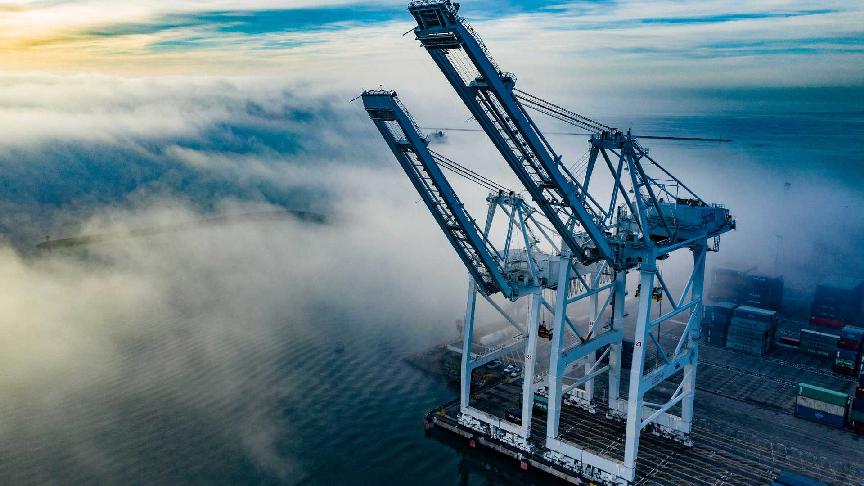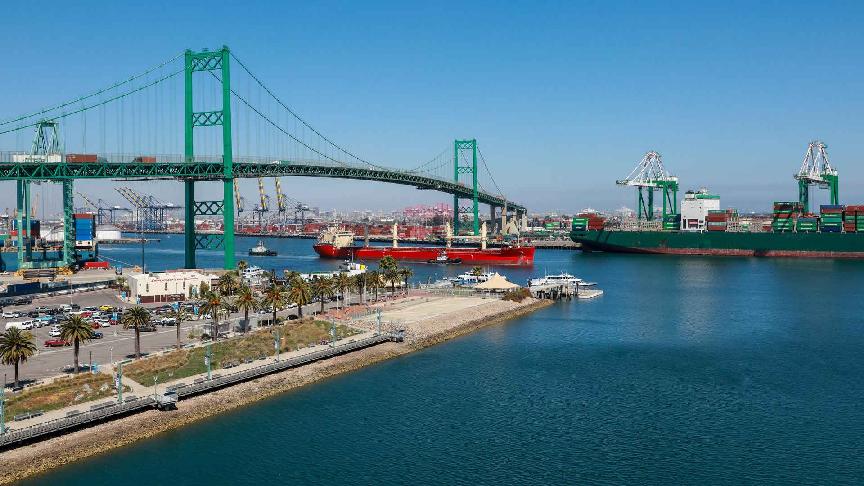12 October 2023 (Lloy'd List) - IMPORTS to major US ports have likely peaked in August at 1.96m teu, falling short of latest projections by the National Retail Federation and Hackett Associates of a sustained 2m teu period between August and October.
NRF vice president for supply chain and customs policy Jonathan Gold said US import volumes for the rest of the year will fall short of earlier expectations but will “still be strong”.
“Retailers stocked up early this year as a safeguard against supply chain labor issues and are well-situated to meet consumer demand,” he said in a statement.
“Shoppers are spending more than they did last year, but the rate of growth we’ve seen the past couple of years has slowed and retailers are working to strike the right balance of supply and demand.”
The NRF and Hackett now forecast September at 1.94m teu, a 4.3% year on year decline. While that would be the first month this year of a single, and not double-digit decline, September last year was the first months when US import volumes began noticeably dipping from their pandemic-era highs.
October is also forecast at 1.94m teu, a 3.1% year on year decline, while November is forecast at 1.91m, a 7.5% increase from the same period last year, and the first year over year gain since June last year.
December is forecast at 1.88 teu, up 8.9% from the same period last year. This would bring the year’s import volumes to 22.1m teu, down 13.5% from last year, which was 1.2% below the 25.8m teu record reached in 2021.
Economic uncertainty looms over consumers and is impacting spending, Hackett Associates founder Ben Hackett said, with growth in discretionary spending slowing and retail imports expected to decline.
Consumer spending grew 1.8% in the second quarter, 0.5% below previous estimates, and the NRF said last month that retail sales could end up in the lower end of the 4%-6% year over year growth it forecast earlier this year.
This is impacting carriers’ operational decisions, Hackett said. Boxships are reducing speeds to absorb capacity without taking vessels out of service as an influx of newbuildings is entering the fleet.
“Even so, ships are not sailing fully loaded, and freight rates are declining as a result. That’s a further indication that no cargo growth from current levels is expected on the near-term horizon. Perhaps 2024 will be better,” Hacket said.
August import volumes were split nearly down the middle between the top ports on the US west coast, and those on the east and Gulf coast.
The top five west coast ports increased their market share to just over 49% in August after their east and Gulf coast raced ahead in early peak season volumes.
Overall, the top ten ports saw volume fall about 13.9% in August from the year-earlier period, and remain virtually unchanged from the same period in 2019.
The top west coast ports handled 6.6% less import cargo than in the same period last year, and 4.9% less than in the same period in 2019.
Meanwhile, the largest east and Gulf coast ports handled 20% less import cargo in August than in the same period last year - when combined volumes at those ports reached record levels - but 5.1% more than in the same period in 2019.
With a west coast labour deal ratified in August, some cargo that shifted eastward as a result of labour uncertainty is expected to make its way back.
The extent and timeline of the reversal remains to be seen, but experts do not believe it would amount to a dramatic amount of cargo, as these eastward shifts were already happening independently of any supply chain disruptions and labour tensions, although these did accelerate them.







